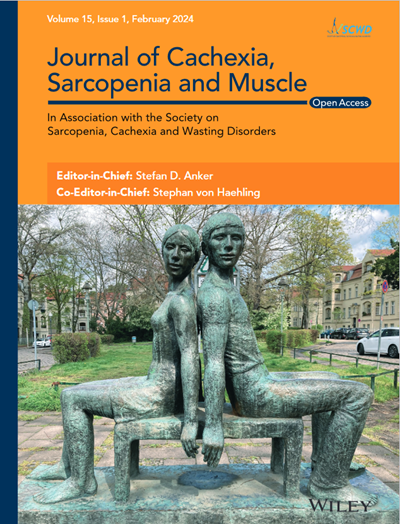Weight-adjusted waist as an integrated index for fat, muscle and bone health in adults
Abstract
Background
Unhealthy body composition, including high fat mass, low muscle mass and low bone mass, is a critical health issue in adults. The weight-adjusted waist index (WWI) estimates fat and muscle mass and may have implications for bone health. We examined its association with body composition outcomes in a large Korean adult cohort.
Methods
This study used data from the Korean National Health and Nutrition Examination Survey (2008–2011). WWI was calculated as waist circumference (cm) divided by the square root of body weight (kg). Dual-energy X-ray absorptiometry was used to measure bone mineral density (BMD), appendicular lean mass (ALM) and total body fat percentage. Unhealthy body composition was defined as combined presence of high fat mass, low bone mass and low muscle mass.
Results
A total of 5983 individuals (3034 men [50.7%] and 2949 women [49.3%]; mean age: 63.5 ± 8.7 years) were included. WWI was positively correlated with total body fat percentage (r = 0.478, P < 0.001) and inversely with ALM/weight (r = −0.485, P < 0.001) and BMD at the lumbar spine (r = −0.187, P < 0.001), femoral neck (r = −0.269, P < 0.001) and total hip (r = −0.255, P < 0.001). Higher WWI quartiles correlated with lower BMD, T-scores and ALM/weight, along with increased total body fat, evident in both genders and more pronounced in women, even after adjusting for confounders. This trend remained statistically significant across WWI quartiles for all analyses (P < 0.001). Higher WWI quartiles were also significantly associated with higher odds of unhealthy body composition, with adjusted odds ratio in the highest WWI group of 18.08 (95% CI, 4.32–75.61) in men and 6.36 (95% CI, 3.65–11.07) in women. The optimal cutoff values of WWI for unhealthy body composition were 10.4 cm/√kg in men and 10.5 cm/√kg in women.
Conclusions
In community-dwelling adults, high WWI values are associated with unfavourable body composition outcomes, indicating high fat mass, low muscle mass and low bone mass. WWI can potentially serve as an integrated index of body composition, underscoring the need for further research to validate its use in clinical settings.


 求助内容:
求助内容: 应助结果提醒方式:
应助结果提醒方式:


